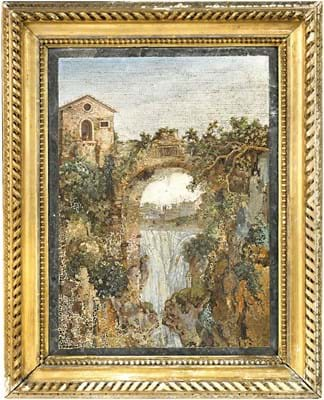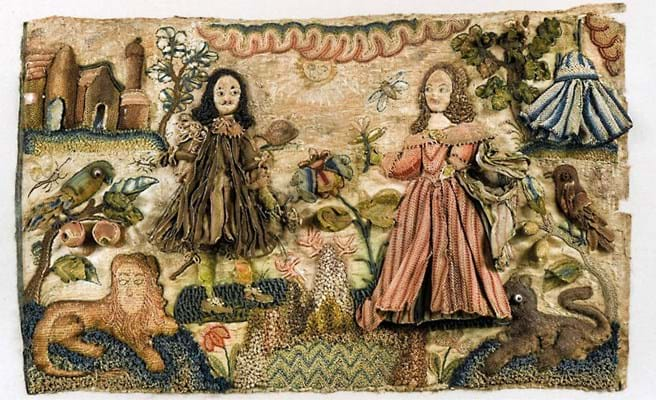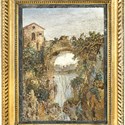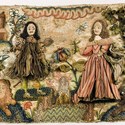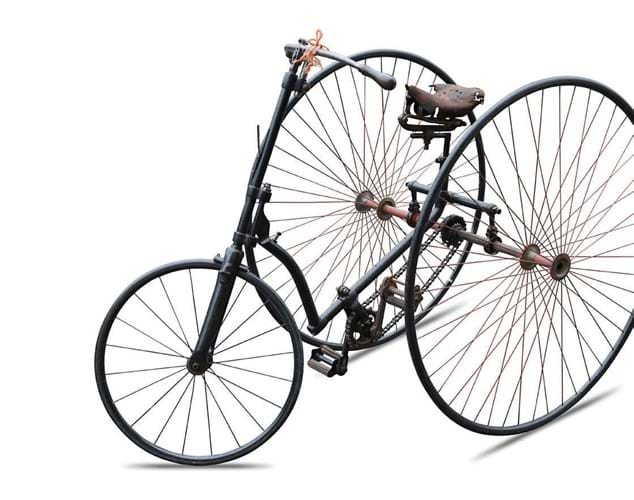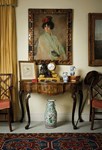Smaller than usual with 406 lots sold over two days, the first ‘fine’ sale of the year at Cambridge auction house Cheffins (22.5% buyer’s premium) prompted a measured response from director Luke Macdonald.
“There has been a notable lack of good-quality stock on the market, partly due to the slowdown of country house sales over recent months,” he said. “But with a buoyant market wanting the best in class of decorative furniture, paintings and antiques this has led to a tangible uptick in prices.”
That auctioneers can be relied on to put a positive spin on most situations is well known. But with 91% of the March 6-7 lots getting away to a total of £465,000, Macdonald had facts to back his optimism.
Italian tours
The sale was notable for a few outstanding individual highlights, most obviously the ice pick from Scott’s Antarctic expedition featured on the news pages of ATG No 2384, but also a large Grand Tour-era micromosaic panel, a Carolean stumpwork picture and a Victorian tricycle.
The micromosaic made in Rome c.1820 – when wealthy Britons were crowding back to Italy after the Napoleonic blockades – depicts the San Rocco Bridge and the Grand Waterfall at Tivoli. In a period carved wood and gilt gesso frame, the 15in (38cm) wide panel was estimated at £3000-5000 but sold to a Continental dealer at £19,000.
“It was quite a surprising price given the amount of restoration it had been subjected to,” said selling agent Mark Littler, who consigned the panel to Cheffins on behalf of a private client.
The 17th century stumpwork picture of Charles II and Catherine of Braganza was mounted on board and came in an 8 x 12in (19 x 31cm) ebonised and tortoiseshell frame. Estimated at £1000-2000, it went to a UK collector at £5000. A late 17th century mirror with a 2ft 4in (73cm) tall beadwork frame, again depicting the Stuart king and the queen consort, sold just shy of top hopes at £3400.
The late 19th century tricycle with 3ft 4in (1.02m) rear wheels and solid tyres was catalogued as possibly a ‘Singer straight steerer’ and estimated at £300-500. It sold at £4200.
It went to a private enthusiast, as did a late 19th century Rudge ‘Bicyclette’ which also demolished the estimate of £500-800 in selling at £5000.
Recovering furniture market
Although the trade left it to private buyers to take all the higher-priced furniture, Macdonald was also upbeat about this slowly recovering market.
“Tastes have changed and demand is now very much focused on certain items, such as early oak and country furniture, upholstered sofas and chairs, marble-top tables, desks and gilt-framed mirrors. All are now achieving far higher prices than a few years ago,” he said.
While a welter of material still bumps along the bottom, punctuated by the occasional strong price, a decent 87% of the furniture at Cambridge got away.
Selling well above estimate was a 19th century mahogany centre table with associated specimen marble circular top at £4000 and a George IV mahogany partners’ desk in the manner of Gillows which tripled top hopes at £3800.


